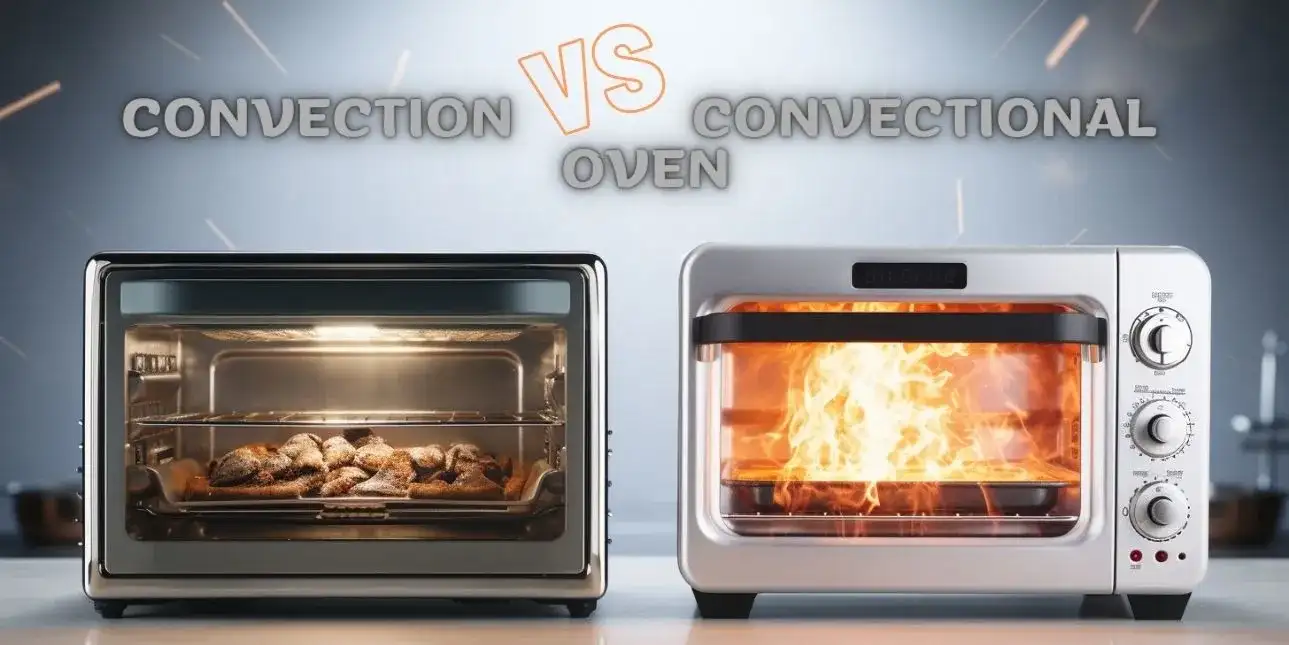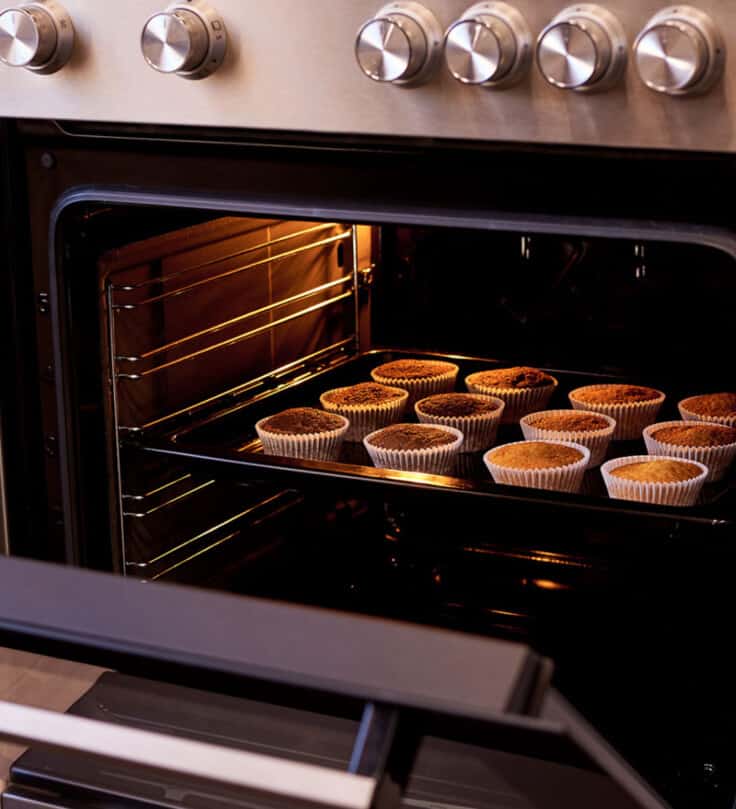As an Amazon Associate, I earn from qualifying purchases

Credit: www.ckitchen.com
Rack ovens use multiple shelves to cook large batches evenly, while conventional ovens typically have a single cooking chamber. Rack ovens are ideal for commercial kitchens, while conventional ovens suit home use.
Choosing the right oven can significantly impact cooking efficiency and food quality. Rack ovens excel in commercial settings due to their ability to handle large quantities and maintain consistent temperatures. They distribute heat evenly across multiple racks, ensuring all items cook uniformly.
On the other hand, conventional ovens are versatile and user-friendly, making them popular in homes. They work well for everyday cooking tasks like baking, roasting, and broiling. Understanding the differences between these two types of ovens helps you make an informed choice based on your cooking needs and environment.
Introduction To Rack Oven Vs Conventional Oven
Choosing between a rack oven and a conventional oven can be challenging. Each type has its own benefits and features. Understanding these differences can help you make the right choice for your cooking needs. Let’s explore both options.
Key Features Of Rack Ovens
Rack ovens are designed for efficiency and versatility. They offer several key features:
- Capacity: Can hold multiple trays at once.
- Even Cooking: Circulate hot air for uniform baking.
- Temperature Control: Easy adjustments for precise cooking.
- Steam Injection: Adds moisture for better texture.
- Durability: Built to withstand heavy use.
Key Features Of Conventional Ovens
Conventional ovens are common in many kitchens. They come with important features:
- Affordability: Generally cheaper to purchase.
- Simplicity: Easy to operate with basic controls.
- Versatility: Suitable for various cooking methods.
- Compact Size: Fits well in smaller kitchens.
- Traditional Heating: Uses direct heat from top and bottom.
Design And Operation
The design and operation of rack ovens and conventional ovens differ significantly. Each type has unique features that affect cooking efficiency. Understanding these differences helps in choosing the right oven for your needs.
How Rack Ovens Work
Rack ovens are designed for high-volume baking. They have a large space to hold multiple trays. Here are key features:
- Multiple Racks: Can accommodate several trays at once.
- Steam Injection: Provides moisture for better baking.
- Even Heat Distribution: Ensures uniform cooking.
Rack ovens operate using powerful fans. These fans circulate hot air around the food. This results in quicker baking times and consistent results.
How Conventional Ovens Work
Conventional ovens are more common in home kitchens. They use radiant heat for cooking. Here are some important points:
- Single Rack: Usually holds one tray or dish at a time.
- Simple Controls: Often have basic temperature settings.
- Heat Source: Uses electric coils or gas flames.
Conventional ovens heat from the bottom. This can lead to uneven baking. Users may need to rotate trays for best results.
Pros And Cons: Rack Oven Vs Conventional Oven

Credit: m.youtube.com
Choosing between a rack oven and a conventional oven can be challenging. Each has its own set of advantages and disadvantages. Understanding these can help you make an informed decision.
Benefits Of Rack Ovens
- Efficient Space Utilization: Rack ovens can hold multiple trays. This saves time and energy.
- Even Cooking: They distribute heat uniformly. This ensures consistent results.
- High Capacity: Great for bakeries and restaurants. They can handle large batches.
- Versatile: Perfect for baking, roasting, and more. Use them for a variety of dishes.
Drawbacks Of Rack Ovens
- Initial Cost: Rack ovens can be expensive. The investment may not suit every budget.
- Complexity: They require more training. Users need to learn how to operate them.
- Space Requirement: These ovens need more room. They may not fit in small kitchens.
Benefits Of Conventional Ovens
- Affordability: Conventional ovens are usually cheaper. They fit many budgets.
- Ease of Use: Simple controls make them user-friendly. Ideal for home cooks.
- Compact Size: They fit in smaller spaces. Great for apartments and small kitchens.
- Variety: Available in many styles. Options include electric and gas models.
Drawbacks Of Conventional Ovens
- Limited Capacity: They hold fewer trays. This can slow down cooking.
- Uneven Heat Distribution: Hot spots can occur. This may lead to uneven cooking.
- Longer Cooking Times: They generally take longer to cook food. This can be less efficient.
Capacity And Efficiency
Understanding the capacity and efficiency of ovens is crucial for any baker or chef. Rack ovens and conventional ovens have different features that affect cooking performance. Let’s explore how these ovens compare in terms of capacity and energy efficiency.
Comparing Oven Capacities
Oven capacity refers to the amount of food that can be cooked at one time. Here’s how rack ovens and conventional ovens stack up:
| Oven Type | Typical Capacity | Best for |
|---|---|---|
| Rack Oven | 5-20 trays | Large batches |
| Conventional Oven | 1-3 racks | Small to medium batches |
Rack ovens can hold more food. They are ideal for bakeries and restaurants. Conventional ovens suit home cooking or small-scale baking.
Efficiency In Energy Use
Energy efficiency is vital for cost-saving and environmental impact. Here’s a breakdown of efficiency for both oven types:
- Rack Ovens:
- Even heat distribution
- Uses less energy for large batches
- Faster cooking times
- Conventional Ovens:
- Heat can be uneven
- Slower cooking for multiple dishes
- Generally less efficient for large volumes
Choosing the right oven impacts both cooking efficiency and energy costs. A rack oven is best for high-volume needs. A conventional oven works for smaller, everyday cooking tasks.
Versatility And Use Cases
Understanding the differences between rack ovens and conventional ovens is crucial. Each type offers unique benefits for various baking needs. This section explores their versatility and specific use cases.
Rack Ovens In Professional Baking
Rack ovens are designed for high-volume baking. They are perfect for bakeries and restaurants. Here are some key benefits:
- Large Capacity: Can hold multiple trays at once.
- Even Heat Distribution: Ensures consistent baking.
- Energy Efficiency: Uses less energy for large batches.
Common use cases include:
- Baking bread
- Preparing pastries
- Cooking pizzas
Many professional bakers prefer rack ovens. They provide speed and efficiency. This makes them ideal for busy environments.
Conventional Ovens For Home And Professional Use
Conventional ovens are versatile and user-friendly. They suit both home cooks and professionals. Here are their notable features:
- Affordability: Generally less expensive than rack ovens.
- Compact Size: Fits well in small kitchens.
- Multi-Functionality: Can bake, broil, and roast.
Common use cases include:
- Family meals
- Cookies and cakes
- Casseroles
Home cooks appreciate the ease of use. Professionals find them useful for smaller batches. Conventional ovens are great for versatile cooking needs.
Cost Implications: Rack Oven Vs Conventional Oven
Understanding the cost implications is essential when choosing between a rack oven and a conventional oven. Costs impact your overall budget and long-term efficiency. This section explores initial investments, maintenance, and operating costs.
Initial Investment
The initial investment varies significantly between these two oven types.
- Rack Oven: Higher upfront cost. Prices range from $5,000 to $30,000.
- Conventional Oven: Lower initial cost. Prices typically range from $500 to $5,000.
The choice depends on your budget and baking needs. A rack oven is ideal for high-volume operations. A conventional oven suits smaller, less demanding tasks.
Maintenance And Operating Costs
Maintenance and operating costs affect your long-term expenses.
| Oven Type | Maintenance Cost | Energy Consumption |
|---|---|---|
| Rack Oven | Higher due to complex systems | More energy-efficient for large batches |
| Conventional Oven | Lower, easier to maintain | Less efficient for large quantities |
Consider the following factors for maintenance:
- Frequency of use
- Type of baking
- Available service options
Energy costs also vary. Rack ovens save energy in high-volume scenarios. Conventional ovens may increase costs with frequent use.
Choosing The Right Oven For Your Needs
Choosing the right oven can change your cooking experience. Two popular options are rack ovens and conventional ovens. Each has unique features. Understanding these differences helps you make an informed decision.
Factors To Consider
- Cooking Style: Do you bake, roast, or both?
- Space: How much room do you have?
- Budget: What is your price range?
- Energy Efficiency: Are you looking to save on bills?
- Cooking Capacity: How much food do you prepare at once?
Recommendations For Different Settings
| Setting | Recommended Oven | Reason |
|---|---|---|
| Home Baking | Conventional Oven | Ideal for small batches and personal use. |
| Commercial Kitchen | Rack Oven | Handles large quantities and offers even heating. |
| Small Restaurant | Conventional Oven | Versatile for various dishes. |
| Large Bakery | Rack Oven | Increases efficiency and production speed. |
Consider your specific needs. Both ovens have strengths. Choose the one that fits your cooking habits.

Credit: zestfulkitchen.com
Final Thoughts
Choosing between a rack oven and a conventional oven can be tough. Each oven type has its unique benefits and uses. Understanding their differences helps in making the right choice.
Summarizing Key Differences
| Feature | Rack Oven | Conventional Oven |
|---|---|---|
| Heat Distribution | Even heat for large batches | Hot spots possible |
| Capacity | High capacity for big operations | Smaller capacity |
| Energy Efficiency | More efficient for large quantities | Less efficient for big jobs |
| Versatility | Ideal for baking and roasting | Great for everyday cooking |
| Cost | Higher initial investment | Lower initial cost |
Consider these differences:
- Heat Distribution: Rack ovens have even heat.
- Capacity: Rack ovens hold more food.
- Energy Efficiency: Rack ovens save energy in bulk cooking.
- Versatility: Conventional ovens are great for daily meals.
- Cost: Rack ovens cost more upfront.
Making An Informed Decision
Deciding between Rack Oven Vs Conventional Oven depends on needs. Consider the following factors:
- Volume of Cooking: Choose a rack oven for large batches.
- Type of Food: Rack ovens are best for baked goods.
- Budget: Conventional ovens fit smaller budgets.
- Space: Ensure enough kitchen space for a rack oven.
Assess your cooking habits. Choose based on what suits your kitchen best.
Conclusion
Choosing between a rack oven and a conventional oven depends on your needs. Rack ovens excel in efficiency and capacity, making them ideal for commercial use. Conventional ovens offer versatility for home baking. Understanding these differences can help you make an informed decision that suits your cooking style and requirements.
Frequently Asked Questions
What Is A Rack Oven Used For?
A rack oven is ideal for baking large quantities of baked goods, ensuring even heat distribution and consistent results.
How Does A Conventional Oven Work?
A conventional oven heats food using top and bottom heating elements, suitable for various cooking methods like baking and roasting.
What Are The Benefits Of A Rack Oven?
Rack ovens provide efficient space utilization, uniform baking, and energy efficiency, making them perfect for commercial settings.
Can A Conventional Oven Replace A Rack Oven?
While a conventional oven can handle basic baking, it may lack the capacity and efficiency of a rack oven for larger batches.
As an Amazon Associate, I earn from qualifying purchases
Pingback: How to Fix F2 Code on GE Oven
Pingback: How to Remove Oven Cleaner Smell